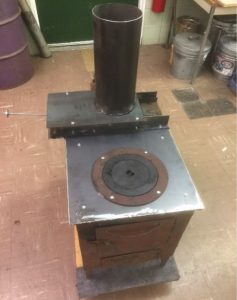Dr. Tom Reed: The Father of Clean Burning?
Dr. Tom Reed: The Father of Clean Burning?
Well, Tom is certainly one of a small group including Paal Wendelbo and Ron Larson who started making “Tier 4” stoves in the 1980’s. I think of Tom when I light his wonderful forced draft TLUD camp stove which I do to demonstrate a simple ‘no smoke’ stove. Tom’s webpage says,” In 1972 Tom Reed became concerned about the energy and fuel futures of the U.S. and began working on alternate fuels on the side while working at MIT in the field of solid state research. He was the first person to use alcohol blends during this period and when he wrote “Methanol – A Clean Fuel for the 21st century”, for Science magazine, it changed his career. In this article he said that for the short term methanol would be made from natural gas, but in the long term biomass could supply our needs forever.
Looking out of the ARC office windows, the rural Oregon road that curves past the campus is lined with 100 foot tall trees and the forest, even after decades of logging, is immense. Learning how to cleanly combust wood seems important here in the US as it does in other countries. Sustainably harvested energy is only amazing if it does no harm when burned and complete combustion opens a carbon neutral alternative that may be necessary in all sorts of applications.
How close is the complete combustion of biomass? Pellet stoves, industrial burners, and forced draft in general gets pretty close. Scrubbing the remaining emissions gets closer. In the cook stove world progress has been faster than I imagined as back yard R&D coupled with university analysis, supported by the DOE and EPA, inches science closer to the zero emission goal. As I envision the steps needed to complete the understanding leading to complete combustion, I’m thinking that reaching the goal is almost inevitable, with thanks to true believers like Dr. Tom Reed who helped to start the ball rolling.



